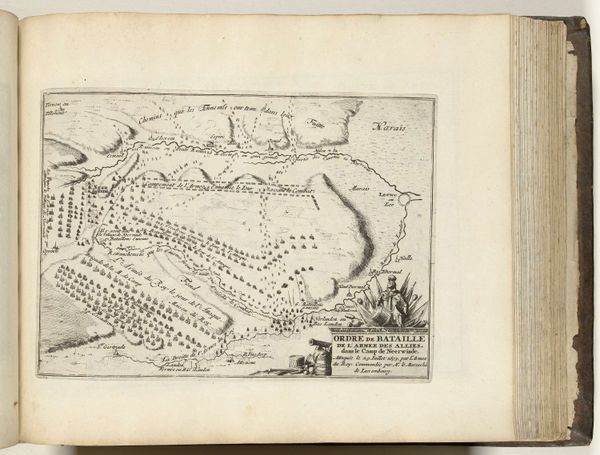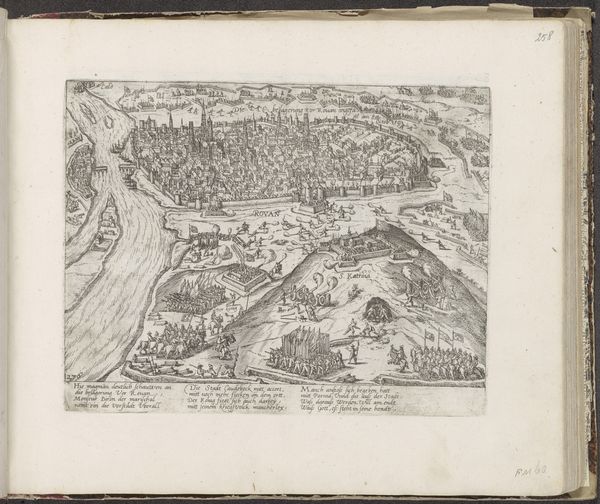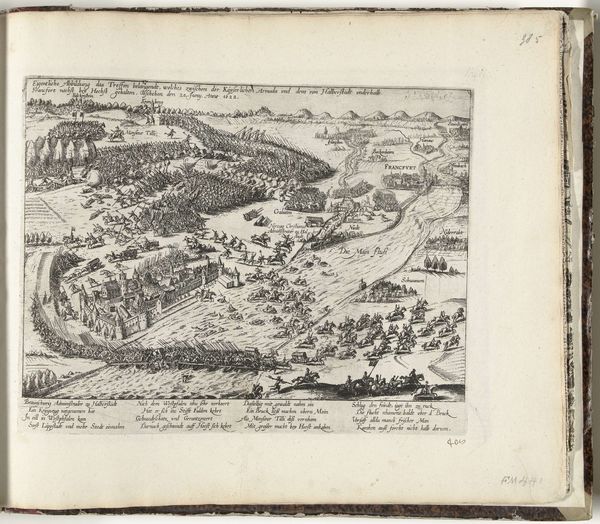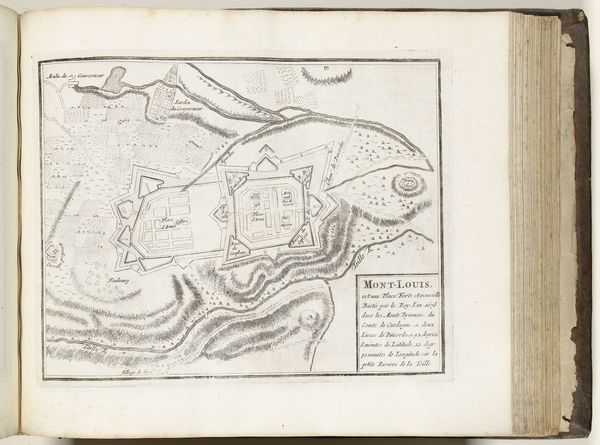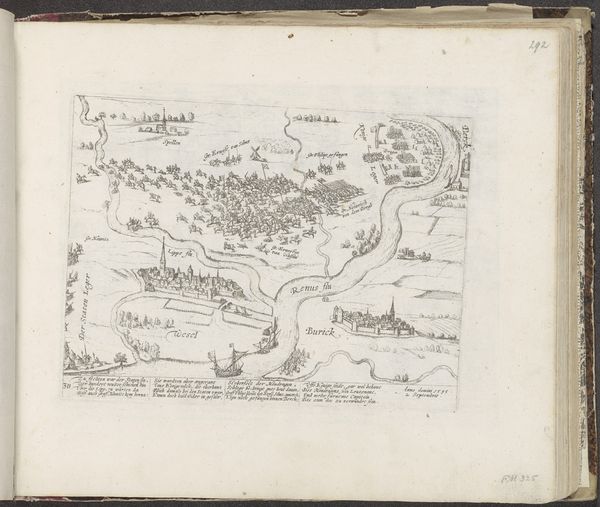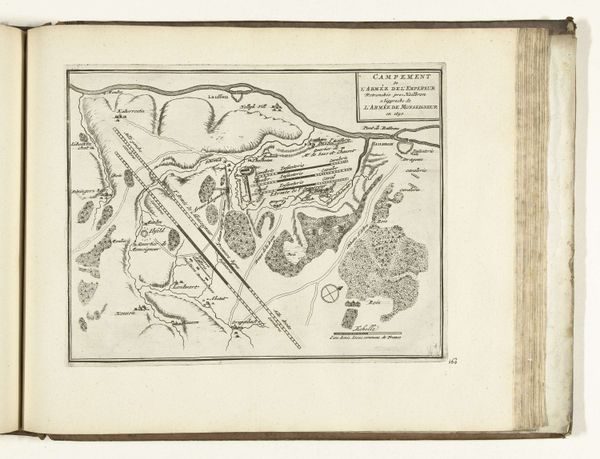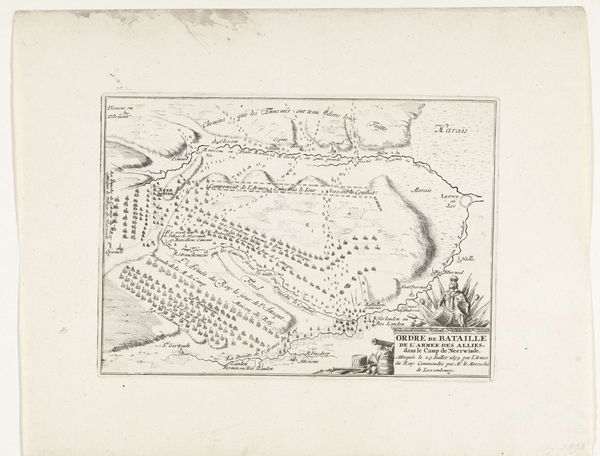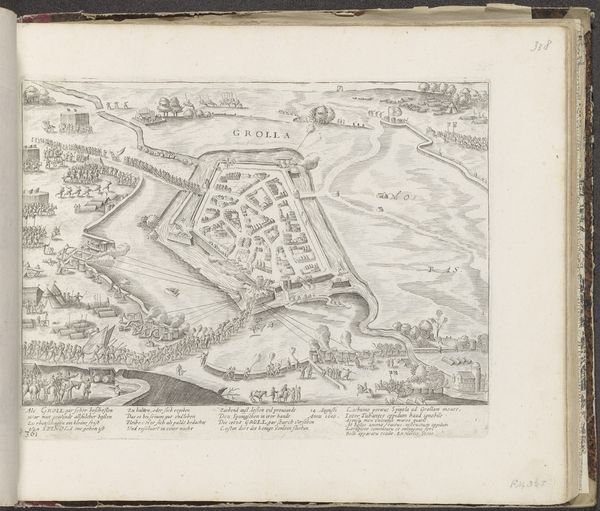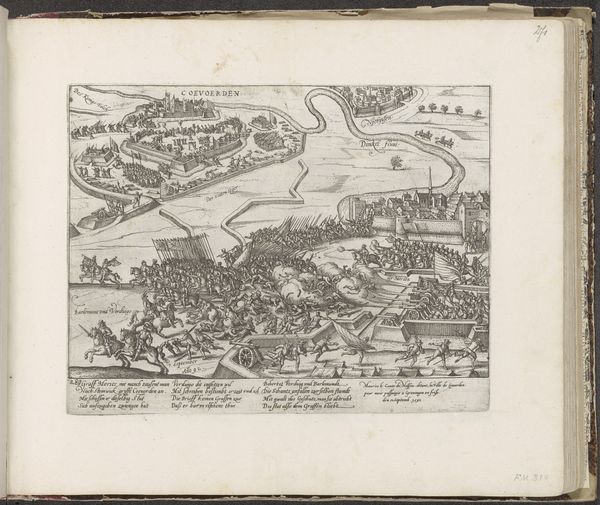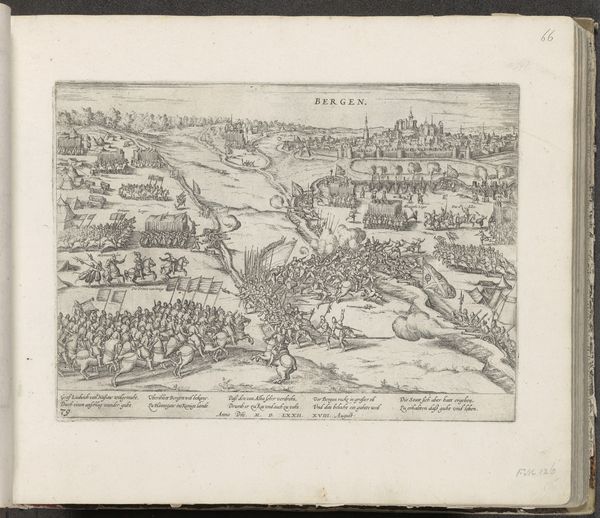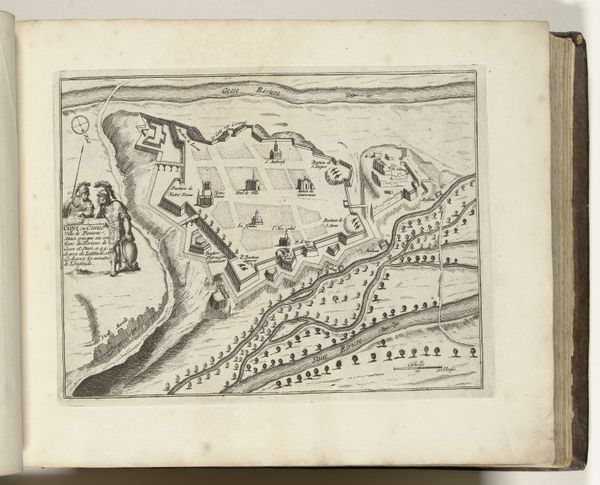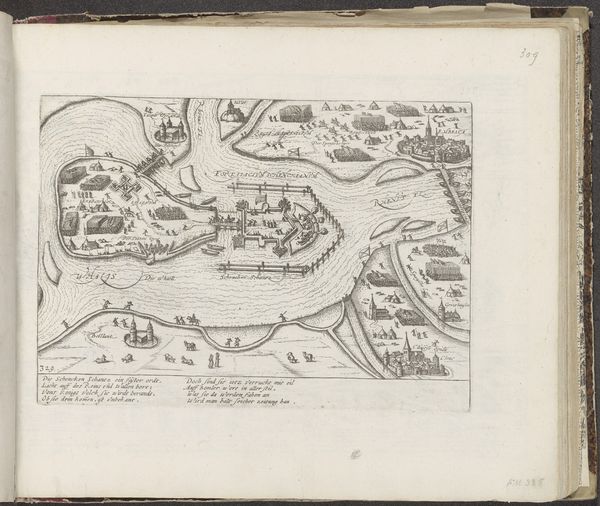
Legerkamp van Maurits en het ondergelopen land buiten de stad, 1624-1625 1625 - 1626
0:00
0:00
anonymous
Rijksmuseum
print, engraving
#
dutch-golden-age
# print
#
landscape
#
geometric
#
cityscape
#
history-painting
#
engraving
#
realism
Dimensions: height 246 mm, width 353 mm
Copyright: Rijks Museum: Open Domain
Editor: Here we have an engraving from 1625-1626, titled "Legerkamp van Maurits en het ondergelopen land buiten de stad" and created by an anonymous artist. It looks like a bird’s eye view map, with a stark, almost unsettling geometric order imposed on the landscape. How do you interpret this work? Curator: This piece speaks volumes about power, control, and the manipulation of the environment during the Dutch Golden Age. Beyond just depicting a military encampment and flooded land, it highlights the strategic use of landscape as a weapon. Notice how the geometric order you mentioned contrasts with the unruly nature. What does that contrast tell you? Editor: Maybe it reflects an attempt to dominate nature, to subdue it for military gain. Curator: Precisely. Consider also how the flooding would have impacted the local population. Beyond the military strategy, we see an imposition upon the lives and livelihoods of ordinary people. This wasn't just a battle between armies, but a struggle waged against the land and its inhabitants. It makes me think about displacement, environmental impact, and who gets to decide how land is used. How might a feminist perspective shift our understanding of this piece? Editor: That's a great question. Looking at it that way, perhaps the flooded landscape represents a kind of violated body, a disruption of natural order with gendered implications… I hadn’t considered that before. Curator: Exactly. And thinking about those broader implications brings historical artwork into contemporary conversations. Editor: I see your point. Thinking about it in terms of social and environmental impact gives it a whole new relevance. Curator: It moves it from being just a historical record to a reflection on the enduring consequences of power. Editor: That’s definitely given me a new way to approach historical art. Thanks for sharing your insights.
Comments
No comments
Be the first to comment and join the conversation on the ultimate creative platform.
